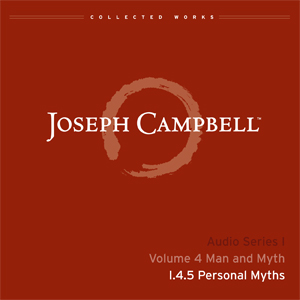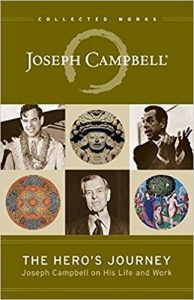What the Chariot Carries

“You’re going on a trip,” Great-Gramma Jennie told my mother.
Mom was a child then, in the prewar years of the Great Depression. Grampa and my uncles left during the day for work and school, and Mom stayed home with her mother and her mother’s mother, my Great-Gramma Jennie. Every afternoon these three generations—maiden, mother, and crone—paused their work of garden weeding, jam canning, laundry hanging, butter churning, and pie baking to gather at the table for tea.
Loose-leaf green tea it was, brewed in an enameled pot tinted the same pale green as pistachio ice cream. Steam shot from the kettle like destiny, impatient to hear itself discussed, as Gramma poured hot water over the leaves. Then, to Mom’s child-sized cup, Gramma added warmed milk from the family cow and a spoonful of sugar. The woody perfume of Grampa’s pipe smoke lingered in the very floorboards of that kitchen, blending with the aroma of whatever simmered on the stove for supper. As Gramma and Great-Gramma Jennie drank their warm, grassy tea, they chatted about news and neighbors, and when they finished, Jennie completed the ritual by examining the remaining leaves that flecked the bottom of Mom’s cup.
“You’re going on a trip,” Jennie told her granddaughter every day, peering seriously into the cup as though it were a tiny Holy Grail. “Yes, you’re going on a trip.”
Read more
That was always Mom’s future: you’re going on a trip. If Jennie used tarot for divination instead of tea leaves, she might have kept the Chariot card on top of the deck. Portending travel and adventure, the Rider-Waite version of the card shows a rider standing in a chariot harnessed to two full-bosomed sphinxes. But instead of reins, the rider holds a scepter.
In The Hero’s Journey: Joseph Campbell on His Life and Work, Joseph Campbell relates the story of the Arthurian knight Parzival, who, at one point in his quest for the Grail, rides with the reins slack, letting his horse lead the way. “The horse represents nature power and the rider represents the controlling mind,” Campbell says. “The slack reins mean that he’s riding nature. His own nature. It’s a noble horse who has the same heart as he” (p. 128). Perhaps the Chariot rider, too, has learned to share the same noble heart as the wise-woman sphinxes who give the Chariot its energy and wisdom. The rider exerts the soul’s sovereignty, symbolized by the scepter, to let other powers lead, relying on faith and instinct more than control.
You’re going on a trip. I can imagine Mom’s big green little-girl eyes shining at this thrilling oracle from her adored Gramma. Jennie’s prediction was a blessing, a benison bestowed on a beloved granddaughter. For me, this family story underscores how similar in meaning the words godmother and grandmother are: wise older women who cherish and gladly work magic on behalf of the youngling.
In 1892, when she was eighteen years old, Jennie herself spent ten weeks traveling alone by stagecoach-chariot from upstate New York to Boston and then to the White Mountains of New Hampshire. Her cousin invited her, Jennie later wrote, telling Jennie that “if I came they would take me around and I would see things to think of and tell of in ‘future’ years and it has proved so. For every night … after I go to bed—it all comes back to me in the quiet hours—of the night—like a moving picture.” Jennie’s adventure became a lifelong stream of mythic memories. She carried her tales of travel in the chariot of her heart as she moved from maidenhood to motherhood and then into cronedom. When she read Mom’s tea leaves, maybe she wished a similar gift for her young granddaughter. That same—or greater—opportunity.
Soon after Jennie’s trip, she earned a teacher’s certificate and got a job at a school for the children of homesteaders who raised sheep and cows far up a hillside riddled with gullies and streams. To deliver Jennie to that remote village, where she lodged with the families of her students, a school trustee gave her a ride up the hill in his wagon-chariot at the beginning of the term, and back down again at the end. That steep, forested, rock-pocked trail would have been a bumpy ride indeed, but something about the company must have proved agreeable, because before long Jennie married the trustee and gave birth to my grandmother.
The Chariot carried Jennie to adventure, to her work in the world, to her future family. That’s what the Chariot does: It carries. It conveys. The Chariot moves the soul from Point A to Point B faster than that soul could have traveled on its own power.
I imagine Jennie as the rider on the card, standing tall with a twinkle in her eye, holding that scepter of sovereignty, propelled by wisdom. I see Gramma as the rider too. I see Mom as the rider. Myself. My whole family. You, if you like. Myth is not only the province of princes and queens. Quiet lives are mythic too.
“You’re going on a trip,” the Chariot says, and that’s how many stories begin—stories of adventure, quest, healing, discovery. “The trip is called your life, and I will carry you anytime you like.”
 Joanna Gardner, PhD is the Director of Marketing and Communications at the Joseph Campbell Foundation, where she also serves as Managing Editor of the Skeleton Key Study Guide series and the lead author of Goddesses: A Skeleton Key Study Guide. Joanna is an adjunct professor in Pacifica Graduate Institute's Mythological Studies program and a founder of the Fates and Graces Mythologium, an annual conference for mythologists and friends of myth. Joanna’s fiction, poetry, and nonfiction appear in a variety of venues, available at joannagardner.com/stories.
Joanna Gardner, PhD is the Director of Marketing and Communications at the Joseph Campbell Foundation, where she also serves as Managing Editor of the Skeleton Key Study Guide series and the lead author of Goddesses: A Skeleton Key Study Guide. Joanna is an adjunct professor in Pacifica Graduate Institute's Mythological Studies program and a founder of the Fates and Graces Mythologium, an annual conference for mythologists and friends of myth. Joanna’s fiction, poetry, and nonfiction appear in a variety of venues, available at joannagardner.com/stories. Weekly Quote
My feeling is that mythic forms reveal themselves gradually in the course of your life if you know what they are and how to pay attention to their emergence. My own initiation into the mythic depths of the unconscious has been through the mind, through the books that surround me in this library. I have recognized in my quest all the stages of the hero’s journey. I had my calls to adventure, my guides, demons, and illuminations.
Featured Video
Myth Resources
Zen and The Art of Motorcycle Maintenance
In his now classic Zen and the Art of Motorcycle Maintenance, Robert Pirsig brings us a literary chautauqua, a novel that is meant to both entertain and edify. It scores high on both counts.
Phaedrus, our narrator, takes a present-tense cross-country motorcycle trip with his son during which the maintenance of the motorcycle becomes an illustration of how we can unify the cold, rational realm of technology with the warm, imaginative realm of artistry. As in Zen, the trick is to become one with the activity, to engage in it fully, to see and appreciate all details–be it hiking in the woods, penning an essay, or tightening the chain on a motorcycle.
In his autobiographical first novel, Pirsig wrestles both with the ghost of his past and with the most important philosophical questions of the 20th century–why has technology alienated us from our world? what are the limits of rational analysis? if we can’t define the good, how can we live it? Unfortunately, while exploring the defects of our philosophical heritage from Socrates and the Sophists to Hume and Kant, Pirsig inexplicably stops at the middle of the 19th century. With the exception of Poincaré, he ignores the more recent philosophers who have tackled his most urgent questions, thinkers such as Peirce, Nietzsche (to whom Phaedrus bears a passing resemblance), Heidegger, Whitehead, Dewey, Sartre, Wittgenstein, and Kuhn. In the end, the narrator’s claims to originality turn out to be overstated, his reasoning questionable, and his understanding of the history of Western thought sketchy. His solution to a synthesis of the rational and creative by elevating Quality to a metaphysical level simply repeats the mistakes of the premodern philosophers. But in contrast to most other philosophers, Pirsig writes a compelling story. And he is a true innovator in his attempt to popularize a reconciliation of Eastern mindfulness and nonrationalism with Western subject/object dualism. The magic of Zen and the Art of Motorcycle Maintenance turns out to lie not in the answers it gives, but in the questions it raises and the way it raises them. Like a cross between The Razor’s Edge and Sophie’s World, Zen and the Art of Motorcycle Maintenance takes us into “the high country of the mind” and opens our eyes to vistas of possibility. –Brian Bruya
Featured Work
Hero’s Journey, The (book)
Joseph Campbell, arguably the greatest mythologist of the twentieth century, was certainly one of our greatest storytellers. This masterfully crafted book interweaves conversations between Campbell and some of the people he inspired, including poet Robert Bly, anthropologist Angeles Arrien, filmmaker David Kennard, Doors drummer John Densmore, psychiatric pioneer Stanislov Grof, Nobel laureate Roger Guillemen, and others. Campbell reflects on subjects ranging from the origins and functions of myth, the role of the artist, and the need for ritual to the ordeals of love and romance. With poetry and humor, Campbell recounts his own quest and conveys the excitement of his lifelong exploration of our mythic traditions, what he called “the one great story of mankind.”
Subscribe to JCF’s email list to receive a weekly MythBlast newsletter along with occasional news and special offers from JCF.





